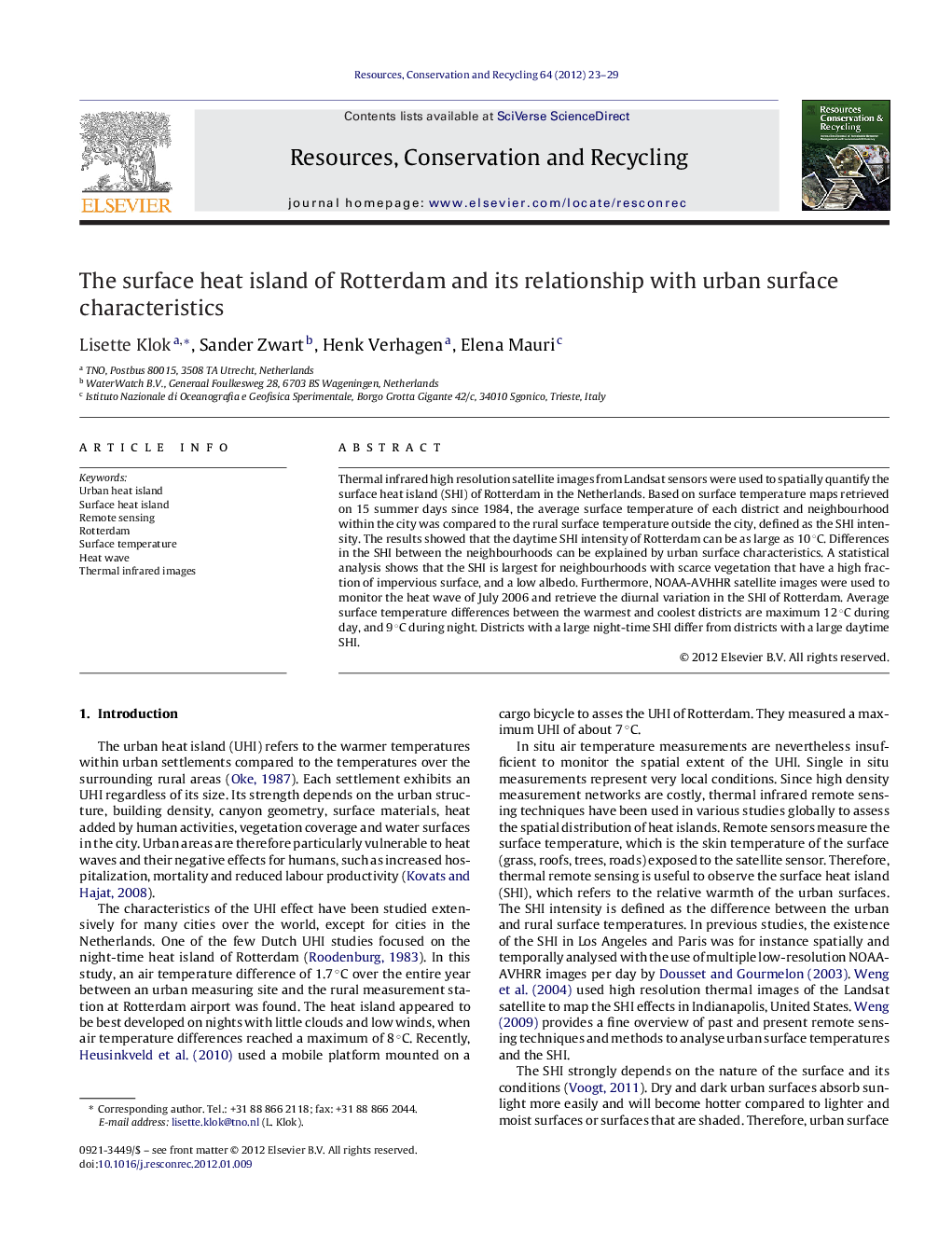| Article ID | Journal | Published Year | Pages | File Type |
|---|---|---|---|---|
| 1063216 | Resources, Conservation and Recycling | 2012 | 7 Pages |
Thermal infrared high resolution satellite images from Landsat sensors were used to spatially quantify the surface heat island (SHI) of Rotterdam in the Netherlands. Based on surface temperature maps retrieved on 15 summer days since 1984, the average surface temperature of each district and neighbourhood within the city was compared to the rural surface temperature outside the city, defined as the SHI intensity. The results showed that the daytime SHI intensity of Rotterdam can be as large as 10 °C. Differences in the SHI between the neighbourhoods can be explained by urban surface characteristics. A statistical analysis shows that the SHI is largest for neighbourhoods with scarce vegetation that have a high fraction of impervious surface, and a low albedo. Furthermore, NOAA-AVHHR satellite images were used to monitor the heat wave of July 2006 and retrieve the diurnal variation in the SHI of Rotterdam. Average surface temperature differences between the warmest and coolest districts are maximum 12 °C during day, and 9 °C during night. Districts with a large night-time SHI differ from districts with a large daytime SHI.
► The surface heat island of Rotterdam was quantified from satellite images. ► The spatial pattern of the surface heat island differs between day and night. ► The images showed that the maximum daytime surface heat island is 10 °C. ► Surface characteristics explain the spatial variation in the surface heat island. ► A 10% increase in the green area decreases the surface heat island by 1.3 °C.
